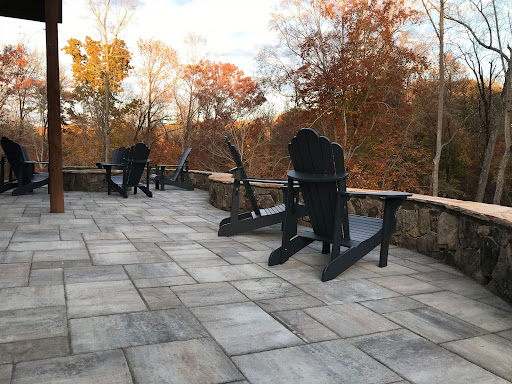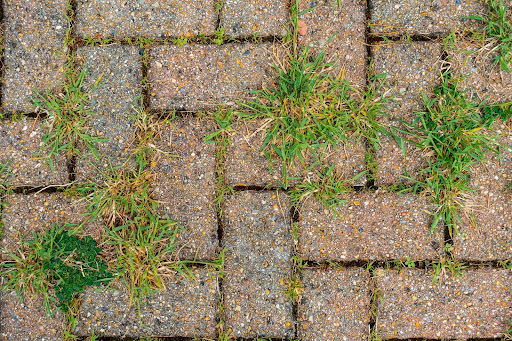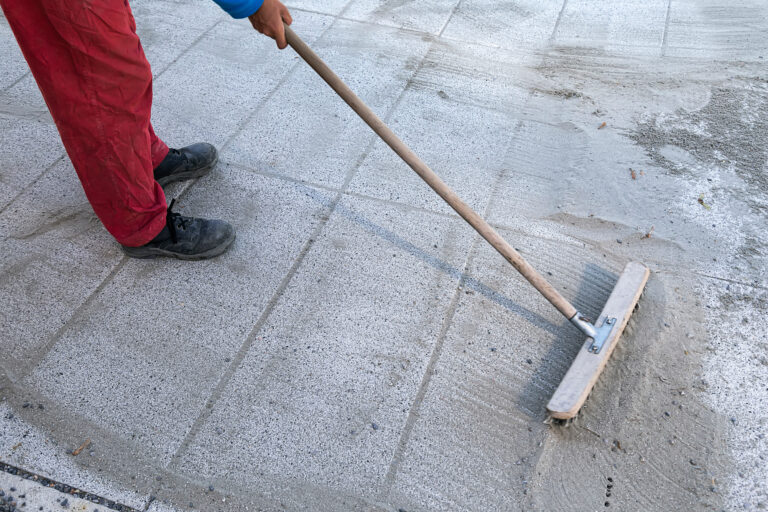Polymeric Sand Reigns Supreme for Paver Jointing
If you have dry-laid pavers or natural stone as part of your hardscaping, there’s no doubt you’ve realized their benefits and contribution to your home’s curb appeal (or backyard appeal). But what if you could improve how your pavers look and feel even more so just by considering the material you use for their joints, for how they are connected to one another?
Whether it’s your backyard patio or the driveway, polymeric sand is the ideal paver jointing for your project. It works wonders and although it hasn’t earned much of a reputation with homeowners as of yet as it’s more of an obscure material, it’s one of the tried and true materials to ensure your pavers are even and well-kept.
What Is Polymeric Sand?
Polymeric sand combines fine grains of sand with a mixture of specific additives, creating a potent binding agent when mixed with water. This agent can then be used to fill spaces between your pavers and lock them in place. Sometimes, it’s called paver sand, jointing sand, or hardscape sand.
As a last step in the process, paver installers with an attention to quality and longevity use polymeric sand for paver jointing because it’s more durable and lays even to fill empty spaces. When there is no available space between the stones, pesky weeds and ants have nowhere to go. This leaves your home with more curb appeal and extends the lifespan of your paver project.
Advantages of Using Polymeric Sand

Polymeric sand is an alternative material many paver installers use to complete the project because it:
Is a Durable Material
Regardless of type, joint sand must remain in place to maintain the integrity of the paver surface. Without this vital material, pavers move around, causing them to settle out of place and create an unkempt look.
Sometimes, the joint appears full, but instead of binding sand, it is full of dirt, weeds, and grass clippings. When a joint is full of this debris, it’s not as structurally stable. Top-grade polymeric sand is a suitable choice for preventing this issue as the binder holds it in place.
It is also durable enough to handle the weight of car tires, foot traffic, and heavy weather conditions, resisting washing out due to the primary contributors of rain and wind.
Prevents Ant Infestations
Ants and other bothersome insects can find their way into the sand of your paver system, making it their home. Talk about an uninvited guest. A recent study from the Proceedings of the National Academy of Sciences estimated there are 20,000,000, 000,000,000 (!) ants on the earth at any given time and although not all of these ants are making their way into your backyard, quite a few of them are.
They make their way through the joints, creating a tunnel into the base and displacing sand to make room for their home.
At this point, your outdoor oasis becomes infested with ants, making your time outside less enjoyable. But it’s also bad for the stability of your pavers. Pavers begin settling, sometimes over several inches, because of the excavated sand. However, most pavers will have minimal shifts caused by the lack of jointing sand.
When polymeric sand is used, it hardens, making it more resistant to ants and other critters tunneling through it.
Reduces Weed and Moss Growth

Inevitably, your pavers will have weeds or grass growing in the joint sand. It’s easy for them to root because the sand is often moist. Because polymeric sand hardens, it becomes more challenging for weeds to anchor into and begin to grow.
Joint sand remains relatively moist from day to day, especially in shaded areas. These conditions create an ideal environment for moss to flourish. Polymeric sand ensures the joint is filled and contains a hard substance, making it challenging for moisture to form and eliminating the ideal environment for moss.
Reduces the Amount of Sand Tracked into Your Home
Walking across your pavers shouldn’t resemble walking across the beach. Although it is still sand, polymeric sand doesn’t feel soft under your feet. When used for paver jointing, it helps to fill and solidify the spaces between pavers, creating a stable and durable surface. This helps to reduce the amount of sand tracked into your home by binding the sand particles together, making it less likely to be blown away by wind. Plus, because it hardens, it’s not as easily tracked into the house, where it can scratch your wood or tile floors so you are all clear on that front.
Is Available in Various Shades
Polymeric sand comes in a variety of shades to match different types of pavers and to match the aesthetic of different outdoor spaces. The most common shades are tan, gray, and brown, which are neutral colors that blend well with a wide range of pavers. There are also red, black, and beige shades, which can add a pop of color to your outdoor space.
Some polymeric sand products also come in multi-colored options which can create a unique and interesting look to your outdoor space. It’s important to note that while polymeric sand can match the color of the paver, it’s not going to be an exact match, as polymeric sand is usually a little bit darker than the paver. Overall, the various shades of polymeric sand allow for a lot of flexibility and customization when it comes to designing an outdoor space.
Brands of Polymeric Sand
Techniseal was the first company to produce polymeric sand over 20 years ago. Since then, hardscaping specialists have relied on this material for filling paver joints. Today, many contractors use the product’s originator, but that doesn’t mean there aren’t other quality companies.
Other high-quality polymeric sand brands include:
- Dominator
- Alliance Gator
- Gator Maxx G2
- Rhino
- Mutual Industries
- Buddingco
Talk to your paver installation company to see which brand they use or recommend for your pavers.
Application of Polymeric Sand

Polymeric sand must be installed under ideal conditions, which means rain is a deterring factor. Ideally, there must not have been any rain for the previous 24 hours before your installation day. As a homeowner, this is not something you need worry about as The Stone Man will make certain ideal conditions exist before starting in on any project. Pavers must be completely dry before applying polymeric sand to protect the joints.
The application process for polymeric sand is fairly straightforward. Our Stone Man installer begins by pouring sand into the joints between each paver, letting it overflow. The remaining steps are then to:
- Use a stiff bristle broom to sweep the sand evenly across the paver and joints
- Compact the sand into the joints, alternating sweeping if necessary
- Switch to a fine bristle broom to remove excess sand
- Add water to the sand, one paver at a time, to activate the polymers
- Eliminate excess water and sand using a blower to dry the area
Although applying polymeric sand to your pavers is a simple task, it’s recommended to use an experienced paver contractor to ensure the material is placed correctly. This will keep your pavers looking sharp for longer.
Is Polymeric Sand Worth the Investment?
Although not all contractors may agree, polymeric sand is the best material for paver jointing in our professional opinion. When high-quality polymeric sand is installed correctly by a qualified professional, your pavers will remain in good shape for a long time, whether you reside in your Charlotte home for many years to come or choose to sell at some point.
It’s important to note that your joint sand may need refilling after brutal winters or heavy storms. Charlotte isn’t prime to either of these so the need to refill will be few and far between.
But do pay attention to your pavers as you walk across them daily to ensure you’ll notice when the sand begins showing signs of wear.
Ensure Your Paver Jointing Is Done Correctly
Regardless of where your pavers are, The Stone Man can ensure the finished job will both serve its purpose and look good. Our team has the knowledge and experience to work with polymeric sand to complete your outdoor hardscape. To improve the look and durability of your pavers with polymeric sand, contact The Stone Man today.


